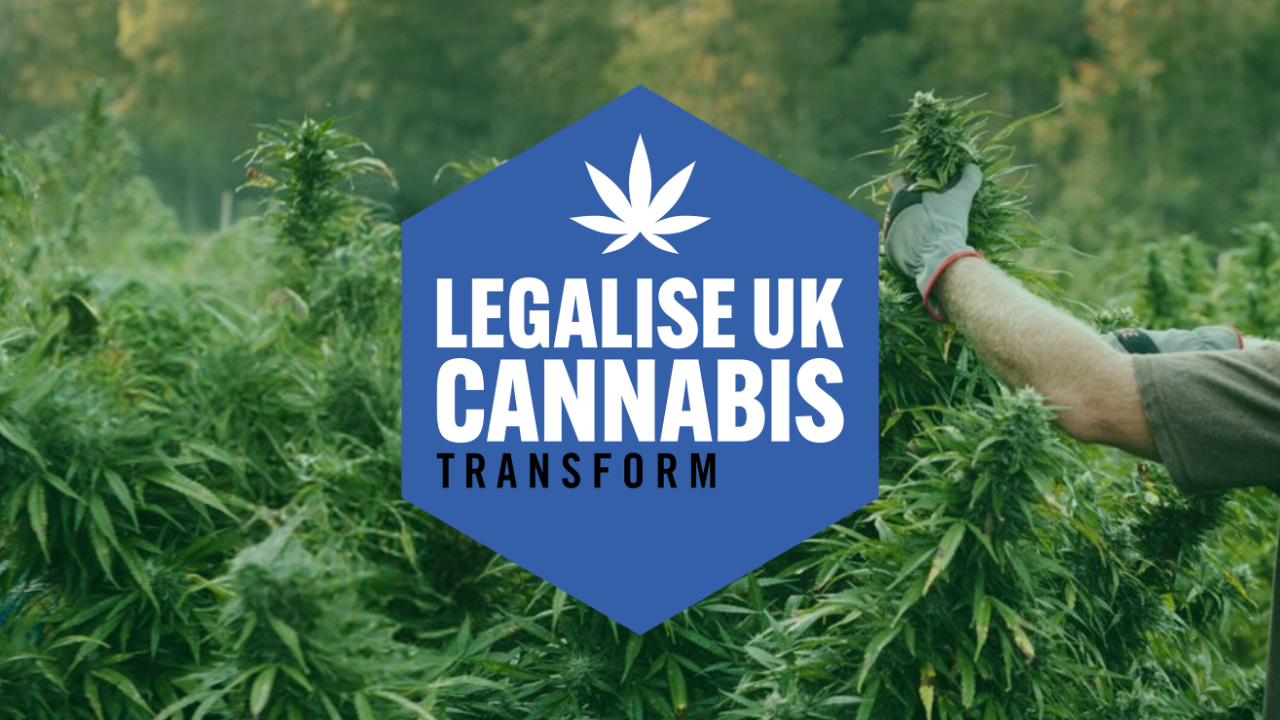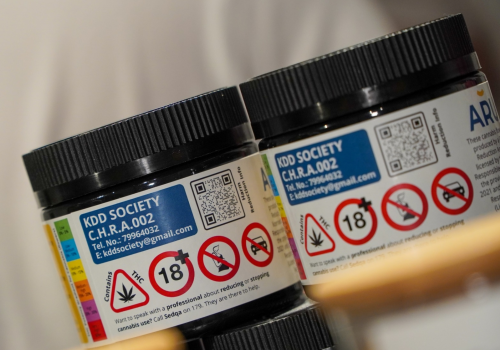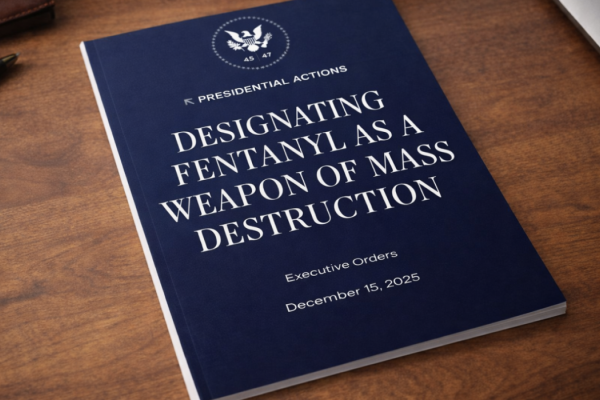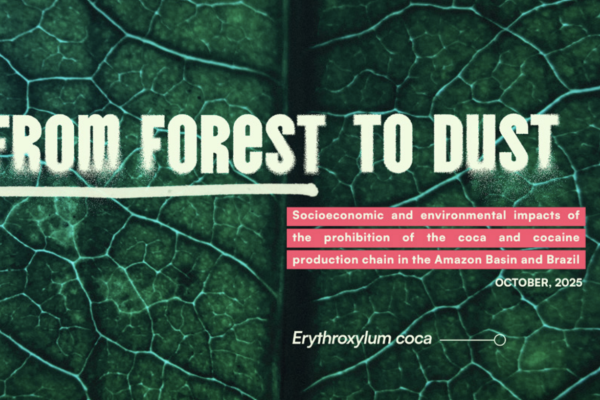6th August 2024
While cannabis prohibition has often been justified as a way of protecting youth, it has spectacularly failed in this goal. Instead, illegal cannabis use and availability amongst young people has increased, while the unregulated cannabis products they are accessing have become more potent and risky. Worse, criminalisation of possession alienates young people particularly through arbitrary use of stop and search powers, that disportionately impact Black, poor and other marginalised youth). Punitive enforcement pushes young people away from prevention, harm reduction & treatment services, fueling school exclusions, or drawing them into the criminal justice system - with potentially life-long negative consequences. The illegal cannabis industry also fuels exploitation of vulnerable youth in production, transport and sales; in the UK this includes a shocking level of human trafficking and modern slavery.
Legal regulation of cannabis offers multiple pathways to reduce these harms. But how should restrictions on youth access be managed under a regulated model? Below we explore this question (an edited extract from updated 3rd edition of Transform’s ‘How to regulate cannabis: a practical guide').
Age restrictions on sales
Preventing access to cannabis by non-adults should be a key element of any regulatory model for cannabis. Any rights of access to psychoactive drugs and freedom of choice over drug-taking decisions should only be granted to consenting adults. This is partly because of the more general concerns regarding child vs. adult rights and responsibilities. More importantly, the specific short- and long-term health risks associated with cannabis use are significantly higher for children: the younger the person using cannabis, the greater the risks.
This combination of legal principle and public health management legitimises a strict age control policy. In practical terms, restrictions on young people’s access to drugs, while inevitably imperfect, are more feasible and easier to police than population-wide prohibitions. Children are subject to a range of social and state controls that adults are not — leading to an expectation of certain forms of restriction. More specifically, restrictions around drug access and use for minors commands the near universal adult support that population-wide prohibitions conspicuously do not.
Under prohibition, unregulated illegal drug markets have no age-access thresholds, and it can be easier for young people to access illegal drugs than legally regulated ones. Whilst it is easy to cherry pick data to support a particular position - generally legal availability for adults has not been associated with rises in non-adult use. One study found that, in US states where non-medical cannabis has been legally regulated, there was an associated 8% decrease in the likelihood of cannabis use (and 9% of frequent cannabis use) among young people. The authors observed that their findings were ‘consistent with ... the argument that it is more difficult for teenagers to obtain marijuana as drug dealers are replaced by licensed dispensaries that require proof of age’. Evidence among schoolchildren similarly suggests no great rise in consumption in Washington or Colorado(and periodic falls in some age groups) since legal adult availability commenced in 2014. In Colorado the proportion of youth reporting easy access to cannabis has also fallen in recent years. This is not to say that regulation will lead to reductions in use among young people; but rather that fears of an inevitable surge in youth use are misplaced, and in fact controls exist within well designed and implemented regulatory models that can reduce access to young people if sensibly designed and implemented.
There is an important debate around what age constitutes adulthood and/or an acceptable age-access threshold for cannabis or other drugs. For alcohol, this generally ranges between 16 and 21 depending on context (though in the UK the minimum age for consuming alcohol — as distinct from purchase — is just five). It also varies in places that have legalised non-medical cannabis, from 18/19 (Uruguay, emerging EU reform countries, and most Canadian provinces), to 21 (in US states, and Quebec, Canada). In Malta the non-profit cannabis association can be joined at 18, but not access to cannabis under 18% THC until they are 21. Decisions on age access thresholds should be informed by objective risk assessments, contextualised within local social norms and political cultures, evaluated by individual states or local licensing authorities, and balanced in accordance with their own priorities — the key one being to protect health of vulnerable youth populations. As with all areas of regulatory policy, there needs to be flexibility allowed in response to changing circumstances or emerging evidence.
Inappropriate, or unworkable, age access prohibitions can create unintended consequences, and undermine, rather than augment, social controls and responsible norms. Making the minimum age for cannabis purchase higher than for alcohol can, for example, preference alcohol for the intervening age period. In the US, the age threshold of 21 for cannabis is consistent with alcohol. In Canada, provinces were allowed to set a higher threshold than the federal minimum age of 18. A number of provinces chose 19 to match their provincial alcohol rules. However, Quebec (where alcohol can be bought at 18) raised the cannabis access age to 21 — potentially preferencing alcohol use for 18-21 year olds or pushing young adults who use cannabis towards unregulated supply.
An age threshold at or near 18 would seem to be realistic starting point (the age below which the UN Convention on the Rights of the Child defines childhood), although this decision inevitably needs to be considered in the local cultural context. While higher age limits may, if effectively adhered to, delay first use (and thereby reduce longer-term harm) they can also encourage more risky behaviours. In the US, the Amethyst Initiative, supported by 136 chancellors and presidents of US universities and colleges, has argued that the alcohol age threshold of 21 has created ‘a culture of dangerous, clandestine “binge-drinking” often conducted off campus’. Furthermore, ‘by choosing to use fake IDs, students make ethical compromises that erode respect for the law.’
Preventing underage sales
Promisingly, age-restrictions for cannabis purchase in the US and Canada have shown high levels of compliance. However, within the goal of ensuring sales to minors are kept to an absolute minimum, sanctions should be proportionate. Some jurisdictions that have legalised cannabis have also introduced disproportionately harsh sentencing provisions for supply of cannabis to minors. In Canada, for example, maximum sentences for supply to children are dramatically higher than the equivalent sanctions for alcohol or tobacco.
In order to be effective, age limits must be properly enforced and understood by vendors. Penalties for underage cannabis sales should be proportionate, and guided by existing penalties in place for underage alcohol and tobacco sales. If the existing penalties for alcohol and tobacco are inadequate, or too strict, then it is likely that penalties in each of these areas may need to be amended to ensure a greater degree of legal consistency. Markedly harsher penalties for underage cannabis sales, compared to underage tobacco or alcohol sales, would never be justified. Penalties can account for the age of the child sold to, and can range from fines, to licence suspension or revocation. Similarly, secondary sales of cannabis to young people should be subject to proportionate sanctions.
Compliance with age controls is usually checked using test purchasing, with the level of compliance giving a useful indication of whether more or less enforcement is required. Evidence from the US suggests that vendor compliance with age access controls is actually very high; a study in Washington and Colorado found that an underage pseudo-buyer was asked for identification on all occasions, and 73.6% of the time upon entrance to the store.
Training for vendors should include information on acceptable forms of identification and how to ask for it in a non-confrontational manner. In order to encourage vendors to comply with requirements, voluntary schemes such as the UK’s ‘Challenge 25’ can be developed to allow staff a greater margin of error when challenging customers for proof of age. Under the scheme, staff are encouraged to request ID from anyone who appears to be under the age of 25, even though the age restriction on the purchase of alcohol and tobacco is 18. Such a scheme has been adopted for cannabis sales in Alberta, Canada, where legislation requires vendors at licensed outlets to ask anybody who looks 25 or under for identification prior to purchase. Posters and labels alerting customers that such a policy is in place, or at least that ID will be requested, are displayed in outlets to reduce the likelihood of a hostile response when an individual is asked to show proof of age.
To remind vendors of the need to perform age checks, most modern electronic tills can be programmed to display an on-screen prompt when age-restricted products are scanned at the checkout. In outlets with the requisite technology, sales of cannabis could trigger such prompts, which would ask whether an ID has been checked and allow staff to select a reason why a sale is accepted or refused from a list of options.
The limitations of age controls
Age controls are inevitably imperfect, and can only be part of the solution in reducing drug-related harms to young people. They are able to limit availability to young people when properly implemented, but not to eliminate it. Effective regulation and access controls must be supported by concerted prevention efforts. These should include evidence-based, targeted drug education programmes that balance the need to encourage healthy lifestyles, including abstinence, while not ignoring the need for risk reduction and, perhaps more importantly, investment in social capital. Young people, particularly those most at risk in marginal or vulnerable populations, should be provided with meaningful alternatives to drug use, for instance through increased investment in youth clubs and activities.
While steps to restrict access and reduce drug use among young people are important, it is also essential to recognise that some young people will still access and take drugs — as is the case with tobacco and alcohol. It is vital that they should be able to access appropriate treatment and harm reduction programmes without fear.
How to deal with minors who are found in possession, found attempting to procure, or more seriously, who supply cannabis to other minors, also requires careful consideration. Guidelines will need to be clearly defined between law enforcers, prosecutors, social services and other relevant authorities, including schools and parents/carers. Again, these should be guided by how comparable offences involving alcohol and tobacco are dealt with, while ensuring that each of these are proportionate, evidence based, and that school exclusions are avoided as far as possible even if this means altering the level of interventions currently in place.
Cannabis reforms are accelerating across the globe. Now it’s time for the UK to legalise and responsibly regulate
PLEASE support Transform's new #LegaliseUKcannabis initiative and crowdfunder - click here for details





